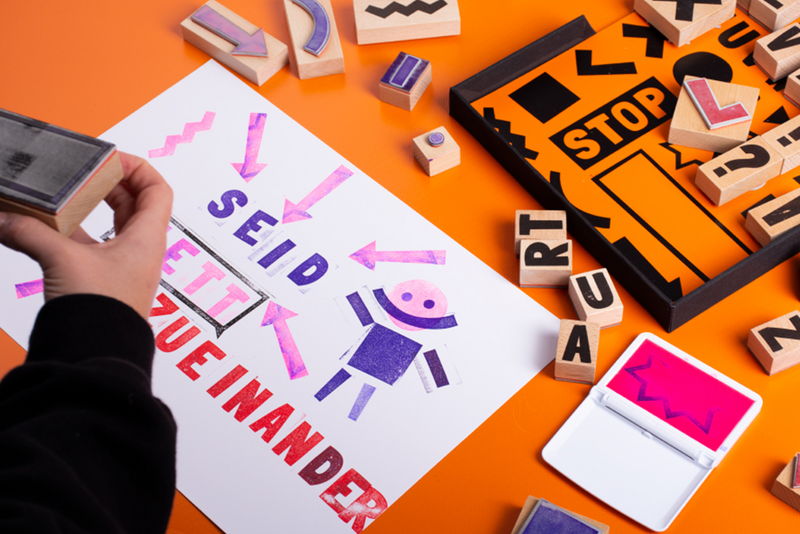
Pain-free writing
Ergonomic pens for beginners and prolific writers
By Doreen Brumme
Whether at school, in training, at university or at work, writing can become painful for a hand that writes a lot. To avoid repetitive stress, retailers should recommend prolific writers to use ergonomic pens and writing aids.
So that the hand can write what the mind thinks, it has to move. It does so in a complex process of wanting and doing, in which our brain controls the muscles that move the skeleton. The skeletal muscles are attached to the joints by tendons and when the muscles contract, they pull on the bones, causing them to move. This involves enormous forces acting on the tendons of the connective tissue. To protect them from strain, the tendons are inserted into tendon sheaths that surround them like a sheath and are filled with lubricant to reduce friction. Anyone who feels a tug in their wrist when writing a lot should act quickly so that the tendon sheaths do not become painfully inflamed. This can be remedied by using ergonomic writing implements and ensuring the correct hand position when writing – something that sometimes has to be relearned. This requires patience, but is well worth it!
Ergonomic writing implements

A pen should lie comfortably in the hand, especially when you’re going to write for hours. It should be easy to use without having to exert much pressure and the ink shouldn’t smudge. In general, pens with a wide, three-sided barrel – which results from a larger diameter – and a padded grip, such as the Haptify 1353 biros from Schneider; the Stabilo Easygraph pencils (pencils), EASYergo (mechanical pencils), EASYbirdy and EASYbuddy (both fountain pens, each in versions for left and right-handers) and EASYoriginal (rollerball pens in versions for left and right-handers); the Lamy abc fountain pen and the Lamy abc mechanical pencil; the Scribolino mechanical pencil and the Scribolino school fountain pen in versions for left and right-handers from Faber-Castell or the Pelikan griffix fountain pen in versions for left and right-handers. The lighter a pen is, the easier it is to balance in your hand. The fine motor skills of the writing hand – which vary greatly between children and adults – are also decisive factors when it comes to choosing a suitable pen. It’s good to know that even when it comes to painting implements, there are ergonomic brushes such as the 5-piece griffix® brush set with triangular grip from Pelikan.
Ergonomic writing aids

The practical Bolly writing aid, a writing ball that attaches to a pen with a diameter of three centimetres, causes the palm of the hand to round when writing: This counteracts a cramped hand and finger posture. So-called "wiggle pens", such as the Squiggle wiggle, are also designed to relieve tension when writing: the inside of these ergo pens vibrates at the touch of a button.
So-called pen weights, which are available in different designs, are attached to the end of pens and weigh them down so that they slide into the correct position – into the hollow between the thumb and index finger – all by themselves when writing. Alternatively, you can buy Fügi, fountain pen cartridges made of brass: These small heavyweights (13 grams) are used in place of the replacement cartridges in fountain pens, making them heavier. And the manufacturer Schneider also offers Senso rollerball pens with a pressure warning: if you press too hard, a warning light lights up so that you can consciously take the pressure out of your hand.
The ergonomic ErgoPen from Stabilo, which is also available in a set with a tablet, bridges the gap between analogue writing and digital writing analysis. It is especially designed for occupational therapists, as it recognises graphomotor and fine motor abnormalities and transfers them to the therapist's app for evaluation.
Alternative ergonomic pen shapes

The majority of ergonomic pens still have the typical straight shape. However, if you hold such I-shaped pens too loosely, they soon slip out of your hand. Gripping them too tightly, on the other hand, leads to strain or cramps. What is more, it is often hard for writers to see what is being written, as their fingers and pen cover the writing up. If they try to compensate for this by tilting their head to one side, they may experience tension in the neck and back. There are, however, already more ergonomic pens on the market, such as the Z-shaped "Yoropen Z3" with a zig-zagged refill, whose design is universal: it can be twisted and shaped. And you no longer smudge what you’ve just written.

If you put a "PenAgain Ergosoft Ballpoint Pen" with a roughened, soft surface in your hand, you will not tire so quickly while writing. The "Ring Pen" does not have a centre of gravity in the middle and its base isn‘t at the front end either, which means it can be safely guided with little effort. The "wood stone pen" is a far cry from the typical pen shape: it lies in your hand like a wooden stone and you buy one that fits the palm of your hand. And the "Ergo pen" from Lafüliki made of beech wood feels like a spinning top in the hand – with an extra-thick diameter of 3.5 centimetres and six grip grooves in the lower section. Handles that can be attached to pens have proven to be useful as writing aids and come in many different shapes.
Ergonomic writing – the right pen position
The pen should be gripped loosely and only gently pressed against the paper. By the way, ink pens are often more ergonomic than other pens because they glide more easily over paper, so less effort is required. A pen is also more ergonomic if it‘s not held too far down at the tip. You should always write with your whole arm, with your hand and wrist resting still and the movement coming from your elbow and shoulder. Your fingers should only support the pen, not guide it. You should not bend over the paper you are writing on, but pull your shoulders back and push your chest out. This way, your shoulders, arms and neck won’t get tired so quickly.
3 tips for retailers
- When they buy pens, give your customers tips on how to use them if they write a lot. If they do, they should take regular breaks and rotate their wrists in figures of eight or shake out their hands. So-called squeezy balls can also be used now and then so as to loosen any stiff finger joints caused by writing.
- When giving your customers advice on pens, always ask whether they write a lot and, if they do, recommend them ergonomic pens to relieve the strain on their writing hand.
- When selling a learner’s fountain pen, the pupil should definitely write down a word or two in order to ensure that it fits snugly into their hand. Also, experience has shown that when the pupil chooses the writing implement by themselves, they value it more highly and treat it better in everyday life.
About the author Doreen Brumme
The freelance journalist on organic issues and #motherof4 Doreen Brumme blogs on doreenbrumme.de about how to enjoy a green lifestyle at work, in school and at home.
Sources:
- ergonomie-am-arbeitsplatz.de/yoropen-z3-ergonomischer-stift-fuer-rechts-und-linkshaender/
- de.wikihow.com/Handschmerzen-beim-Schreiben-vermeiden
- www.meine-krankenkasse.de/sehnenscheidenentzuendung/
- www.minimed.at/medizinische-themen/bewegungsapparat/bewegungs-und-stuetzapparat/
- www.dasgehirn.info/handeln/motorik/der-bewegte-mensch
- www.staples.de/wissens-lounge/ratgeber/ergonomische-schreibgeraete.html
- www.welt.de/gesundheit/article162288592/Mit-der-PECH-Regel-gegen-Sehnenscheidenentzuendung.html
- ergonomie-am-arbeitsplatz.de/ergonomische-stifte-und-schreibhilfen/
- www.staples.de/wissens-lounge/ratgeber/ergonomische-schreibgeraete.html




